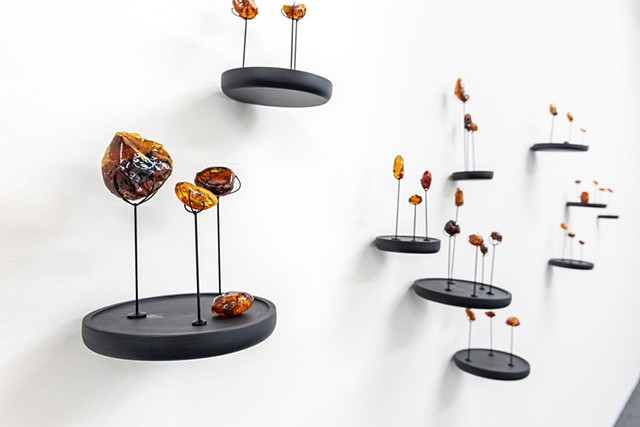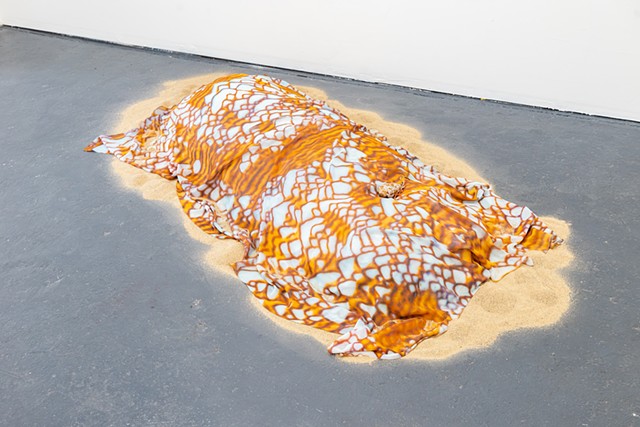In the Shadow of the Sundial at Goldfinch
Exhibition text:
In Galleries 1 & 2, Goldfinch is pleased to present In the Shadow of the Sundial, a solo exhibition by multi-media artist and environmental activist Jenny Kendler. The exhibition is on view from April 24 through May 28, and the Opening Reception / Open House is on Sunday, April 24 from 12-4pm.
From large-scale public projects and installations to intimately scaled objects, Kendler’s interdisciplinary practice examines and “re-stories” our relationship to and within the natural world. For the past 15 years, her work has explored seemingly overwhelming environmental concepts—from extinction to climate change—through sculptures and installations that beckon for an emotional, and often private, encounter with their viewers. For Kendler, these intimate, emotive experiences are instrumental in larger conversations about how we view the more-than-human world and our relationship to our ecological pasts, presents, and uncertain futures.
Mysterious, witty, and melancholy, many of the sculptures on view in the exhibition demonstrate the artist’s fascination with survival tactics found in nature, evolutionary strategies such as camouflage, encrustation and various symbiotic relationships. In Kendler’s hands, ready-made objects such as decorative tchotchkes, kitchen knives, books—and even a 1980’s boombox—undergo a process of “rewilding,” as the artist adorns and transforms them with materials bearing embedded histories: air quality-indicating lichen, shells of organisms threatened by ocean acidification, or ash Kendler creates by bio-charring Rachel Carson’s seminal book, “Silent Spring.” These alterations, which often engage old traditions of craftsmanship, speak to what Kendler describes as our “sublimated longing for connection to the natural world,” through which decorative objects like porcelain birds act as “surrogates” for a connection to nature. Through these transformed works, Kendler’s practice gently reminds us of the power in patient, diligent looking, in order to see beyond the immediate form or surface of things.
Themes of mourning and funerary practices are quietly woven throughout the exhibition. Fragments of natural materials like seeds and bone are reconstituted as objects that ask us to consider notions of heirlooms and archives. What do we preserve and pass on? What do we inherit, and how do ideas of value shape our perspectives about the natural world? The hackberry seeds, for instance, that comprise an intricate necklace on view in the exhibition are made from the same compounds that compose the precious gemstone opal. Kendler asks: “What if our heirlooms were not jewels, but seeds?”
For the artist, the sundial alluded to in the exhibition title is a very real one, encountered in a particular place and time, and recalled from personal memory. More broadly, it speaks to the way we have always accounted for the passage of time, measuring it in various ways, while currently standing “in the shadow of a momentous time of change, a moment of intersecting crises,” Kendler notes. Though slow and analog, the sundial—an ancient device—continues to capture shadows from the same sun that has always shone. As Kendler’s work considers notions of deep time and questions the ecological legacies we leave behind, it asks us to consider our echoes in the natural world, and to be careful with the shadows we cast.











































